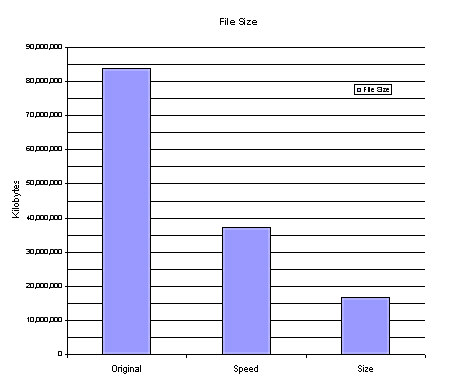Database Compression
There are three options for compressing a database:
No compression
-
The database has no compression
-
3 times faster read/write than no compression (yes, 300% faster)
-
The database is 58% the size of an uncompressed databases (or 42% smaller)
Compress for size
-
25% faster read/write than no compression
-
The database is 19% the size of an uncompressed databases (or 81% smaller)
Databases are compressed for storage using the lossless open source library at https://zlib.net. This library supports compression for speed and for size.
The speed and performance values here are considered best-case scenarios where the majority of data in the database is stored as doubles, and the databases are large. Speed and size benefits will be less with other data types, and with smaller databases. Databases with lots of short lines and channel (such as Wholeplot databases) will see little benefit from compression. The chart below shows the effects of a each compression method on a large database.

Speed results will also vary with hardware. Our tests were performed on a 200 MHz Pentium.
Script Processing Time
The chart below shows the effects of database compression on script processing time.

Got a question? Visit the Seequent forums or Seequent support
© 2023 Seequent, The Bentley Subsurface Company
Privacy | Terms of Use
